
However, the possibility of manufacturing errors rises with the complexity of modern automobiles. Such errors are common in assembly sections, especially in battery assembly lines.
In today’s cutthroat auto industry, manufacturers can not afford to make mistakes like this. So they increasingly depend on a highly successful strategy for defect prevention across the board to meet consumer expectations for product quality.
Machine vision is the ultimate solution they get when looking for ways to detect defects. This technology has several uses in the automobile sector, including preliminary inspections.
Thus, industrial image processing, often known as machine vision, is a crucial technology for the automotive industry. It can optimize many processes throughout the value chain, including manufacturing, quality control, and supply chain management.
In today’s post, we will learn why AOI lenses are helpful in the automobile sector, especially in battery assembly lines.
What Is the Use of Industrial Lenses in Battery Assembly Lines?
Manufacturers need to perform various tasks in battery assembly lines. Thus, they need advanced defect detection tools to assess and classify battery cell welds.
The cells and modules that form EV batteries are completely encased at the end of the manufacturing process. So it places an additional burden on vision systems to reliably catch flaws across all four stages of EV battery manufacturing, since faulty components might be difficult to replace or fix.
EVs are powered by lithium-ion batteries, which are complicated systems in themselves. These batteries are separated into three distinct types (cylindrical, pouch, and prismatic) with few common features.
However, the electrode is the fundamental component of every battery and is responsible for the cell’s security, energy density, and cycle life.
Electrode materials are first applied to copper and aluminum foils in the production of batteries, and the size of these coatings must be accurate to ensure effective current flow.
Before the electrode is rolled, coiled, or stacked into a lithium-ion cell, problems must be addressed in advance. Besides, the manufacturing process’s precision and repeatability must be validated using an area scan camera to measure the widths of the electrode, metal foil, and insulator. Decarburization, dribbling, and other surface flaws may be seen with the use of line scan cameras.
Each cell of an electric vehicle battery is a sealed unit containing electrodes, electrolytes, and a separator. Cells are assembled by winding, rolling, or stacking, depending on the battery architecture. Notches are cut onto the copper and aluminum electrode sheets’ edges to generate metal tabs before the sheets are wrapped or stacked to make a cell.
Poor cell connections may result from even a little misalignment of these tabs. Thus, high-resolution AOI lenses are required to measure the space between them.
The increasing demand for industrial lenses for such applications has encouraged vision suppliers like Coolens lens. The AOI lenses designed by Coolens lens help manufacturers perform inspection operations during battery assembly.
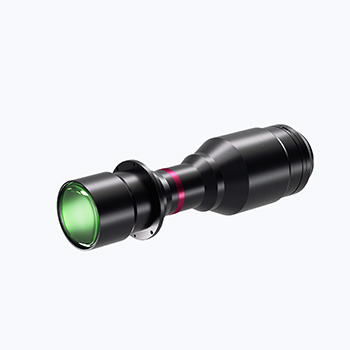 |
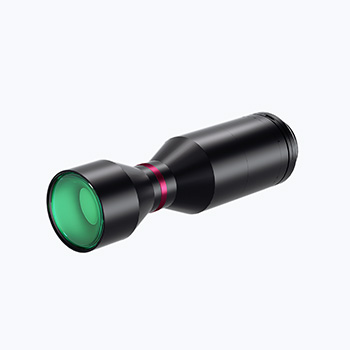 |
| 2.0X, 24K M95 Bi-Telecentric Lenses BFL Adjustable |
1.0X, 24K M95 Bi-Telecentric Lenses BFL Adjustable |
What Are the Different Types of Inspections Performed during Battery Assembly?
Automobiles’ quality assessments are now largely evaluated by machine vision systems and sometimes by human inspectors. Vehicles utilize human and automated vision systems to evaluate anything from body panels, batteries, and engines to suspensions.
However, there are difficulties both machine vision systems and human inspectors face. Below we will discuss a particular application, its problems, and the possible solution.
Inspecting the Welding on the Cap
One area where internal combustion engine and electric vehicle production overlap is weld inspection. However, there are certain requirements and standards for a proper weld in EVs.
Problem: Improper Welding May Lead to Beads, Bends, or Holes
Reduced efficiency, an unequal load across cells that increases the difficulty of battery management, and a shorter battery pack lifetime are all the results of a poorly built battery cell.
It is difficult to fix manufacturing defects once cells have been assembled into modules and packs. A cylindrical cell’s casing is sealed with a lid after the electrolyte has been poured inside and the electrodes and separator have been crammed within.
Solution: Use Low-Heat Welding Methods
Low-heat welding techniques like laser are essential to protect the fragile electrical components connected within the housing. Accurate welding is necessary to provide a tight fit of the cap. Before being employed in a battery module or individually, the resultant welds must be inspected and found to be satisfactory.
If electrolyte escapes through a poorly welded joint, it will reduce cell efficiency and may cause internal short circuits. The performance and longevity of the whole battery depend on an accurate evaluation of the cap welds.
There is a large range of possible flaws in all of these welds, but there is also a huge range of possible variations that do not affect performance.
The defect detection AOI lenses at VicoImaging have been designed to work on a wide variety of objects. Your machine vision system subsequently learns to correctly categorize and differentiate between defect categories, regardless of object and weld changes. But of course, you must use the correct AOI lens to help support the machine vision system.
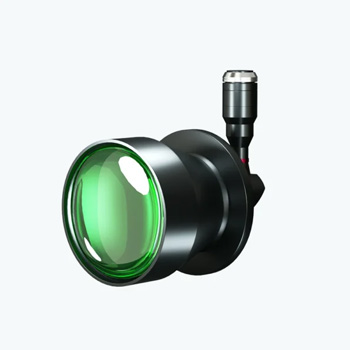 |
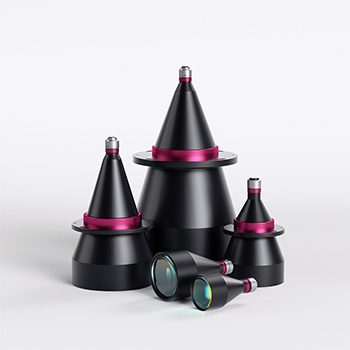 |
| 0.656X, 16K M72-Mount 90° Angle Bi-Telecentric Lenses |
1/2.5″ C-Mount Bi-Telecentric Lenses |
Inspecting the Injection Seals
An electrolyte, the liquid that conducts electrons inside a battery, is added after the top cap of a cell has been welded and tested. Once the filling process is finished, the filling hole must also be welded. It is accomplished through a low-heat laser weld to prevent heat damage to the anode, cathode, and electrolyte.
Problem: Excessive Welding May Cause Electrolyte Leakage or Contamination
Electrolyte leakage or contamination from improper welding can reduce cell efficiency. While it is possible that an electrical test may reveal a fault with a filled and sealed cell before the cell is used in a module, this approach is not foolproof.
Solution: Employ Seal Inspection System
The performance and longevity of the whole battery depend on an accurate evaluation of the injection seal welds. These welds may have a wide variety of flaws and can have a wide range of visual appearances.
There is a lot of variety that’s acceptable in the welds, and it doesn’t hinder performance. VicoImaging’s defect detection lenses can see various weld variations precisely. It allows the machine vision system to categorize defects and differentiate between insignificant and functional problems.
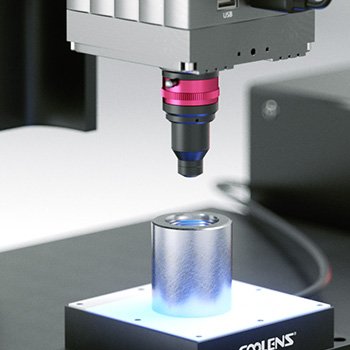 |
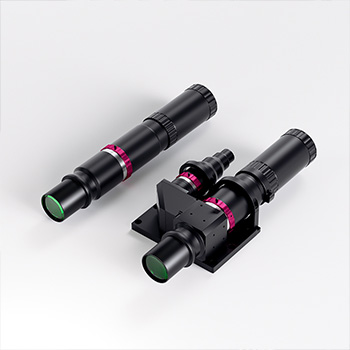 |
| Hole Inspection Lenses for 360° Inside View |
35F M58-Mount Telecentric Lenses |
Surface Inspection of Battery Cells
A strong protective coating is applied to battery cells after they have been welded. Below are the problems associated with the battery cell surface.
Problem: Improper Coating May Cause Uneven Surface
Inadequate coating application, bubbles and impurities beneath the coating, and scratches penetrating the coating are all possible issues associated with the coating. The proximity of the cells, the heat created by the cells, the charge each cell must carry, or poor connection with thermal interface material (TIM) may all contribute to electrical short or overheating when these cells are packed closely into a battery module.
Solution: Perform Surface Inspection Using Machine Vision
Small imperfections in the coating of a battery cell may not affect its performance, whereas even shallow scratches may make the cell unsafe for use.
Identifying these flaws is crucial. Likewise, limiting the rejection of imperfect but usable coatings is equally important.
Advanced machine vision systems include built-in deep learning inspection capabilities and may be used to examine the surface of a battery cell.
Advanced AOI lenses designed by Coolens can capture both perfect and imperfect surfaces. Because of this, your machine vision system can detect and pass surfaces that fall within the permitted range of variation while simultaneously flagging surfaces with unacceptable faults.
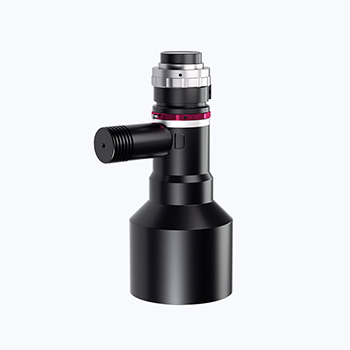 |
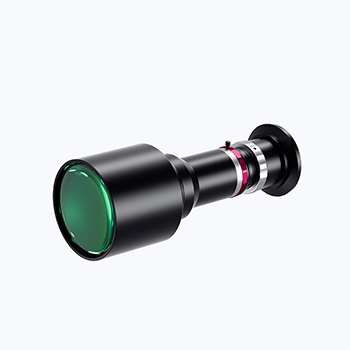 |
| 0.46X, 1.75″ M42-Mount Telecentric Lenses with Coaxial Illumination Port, Iris Adjustable, BFL Adjustable |
0.55X, 1.75″ M58-Mount Telecentric Lenses Iris Adjustable, BFL Adjustable |
Inspecting the Pouch Surface
During degassing, a pouch-type battery cell has an uneven form. The cell pouch is pressed to smooth and iron out any rough spots after jig creation.
Problem: the Texture on the Pouch Surface May Contain Bubbles or Wrinkles
Wrinkles, bubbles, and other flaws may be hard to see against the pouch’s varied surface texture, which provides a noisy and incoherent backdrop.
Solution: Use Advanced yet Automated Inspection Systems
The pouches must be even, wrinkle-free, and unbent. Manufacturers of cell batteries use automated inspection devices to look for surface flaws.
Because of the wide variety of cell pouch appearances, a thorough visual inspection would be extremely laborious and time-consuming.
VicoImaging’s AOI lenses are designed to capture clear photos to spot flaws like bubbles and wrinkles. After that, the machine vision system can recognize a pouch’s typical surface, which may include slight imperfections that are not flaws.
Anomalous characteristics include everything that doesn’t fit the standard look of the model. Our lenses can spot all abnormalities with high accuracy and consistency.
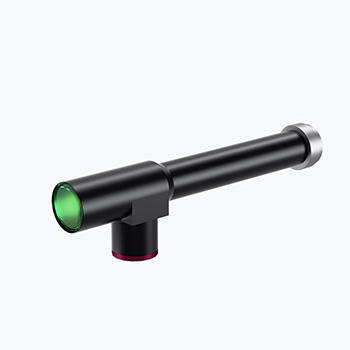 |
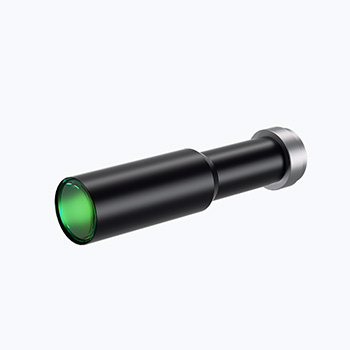 |
| 8X 2/3″ Telecentric Lenses with Coaxial Illumination Port |
2X 2/3″ Telecentric Lenses |
Welding the Top and Side Panels
A prismatic battery cell encloses an electrode sheet inside a rectangular container. The top panel is welded on after that. Below are some problems that may exhibit during the welding process of the top and side panels.
Problem: Incorrect Seam Welding
The cell will expand and contract as it warms up and cools down. Thus, the lid has to be flexible. Since prismatic cells may be stacked densely in a space-saving manner due to their form, this is a crucial factor to consider.
Before a battery cell can be put in a module, the seam welds on both the side and top panels must be examined for flaws.
Solution: Perform Seam Inspection Using Machine Vision
The performance and longevity of the complete battery rely on an accurate evaluation of the seam welds on each individual cell.
The look of each of these welds might differ greatly. There might be a large variety of flaws, but there can also be differences that do not impact functionality.
Many more kinds of defects can be found by using machine vision systems. Our AOI lenses can capture high-quality images of an object. The vision system can then categorize and separate functional faults using these images.
 |
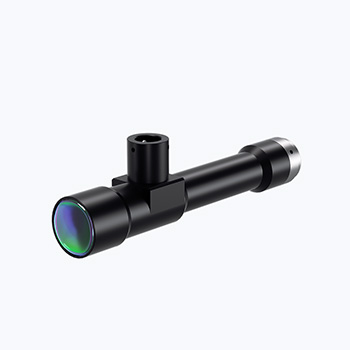 |
| 6X 1.1″ Telecentric Lenses with Coaxial Illumination Port |
4X 1.1″ Telecentric Lenses with Coaxial Illumination Port |
What Is the Role of Machine Vision in Battery Assembly Lines?
Machine vision is expanding into new areas of applications, and the assembly and inspection of car batteries is one of them. Manufacturers can improve quality control and inspection procedures using line scan cameras, industrial lenses, and machine vision.
Capture the Clear Picture
Machine vision can improve decision-making by translating visual data into actionable insights in every setting. The automobile industry can improve manufacturing and solve long-standing production problems by integrating cutting-edge vision technology with clear images, robust data, and predictive insights.
Avoid Downtime
In the automobile industry, every minute of downtime results in hundreds of dollars in lost revenue due to late deliveries or damaged brand image. By automating and enhancing quality control, machine vision helps manufacturers avoid expensive mistakes, downtime, and product recalls.
In-Depth Inspections
Machine vision can perform even the most complicated surface inspections on vehicle assembly lines. It includes 2D and 3D item identification, dimensional measurements, character reading, component recognition, etc.
Automated Quality Assurance
Machine vision allows manufacturers to locate faulty or missing components, identify assembly faults, and avoid problems with finished automobiles. Quality control systems can guarantee accuracy, durability, and dependability in every final product using automated visual inspection.
Assured Product Safety
Automated vision inspection can help ensure that potential safety hazards aren’t ignored in highly regulated, safety-conscious sectors. With this, manufacturers can avoid the expense of redesigns and the potential for brand harm caused by product recalls due to safety concerns.
Future-Proof Technology
Manufacturers can prevent their industrial inspection systems from becoming obsolete with an advanced machine vision system built for the future. Suppose you’ve invested heavily in technology and automation. In that case, you can be certain that your newest machine vision solutions will continue to be effective with frequent software upgrades.
While vision technology serves a similar purpose for both ICE and EV production lines, EVs offer a few distinct challenges for vision applications, particularly in battery production. Thus, companies like Coolens have been vigorously helping manufacturers in the EV sector.
Coolens has developed a variety of lenses to help automobile manufacturers inspect auto parts.
Final Thoughts!
Machine vision technologies are used in various industrial contexts to inspect objects quickly and precisely. It helps automate and speed up different manufacturing processes in the automobile industry. These techniques are used in the identification and sorting of faulty items, as well as for the detailed inspection of component surfaces.
Machine vision is unique because its algorithms can quickly identify and analyze picture information. As a result, rapid and automated product inspections can be performed in massive volumes.
However, a good machine vision setup is incomplete without high-end lenses. A perfectly designed industrial lens can perform half the inspection work by accurately capturing the object images. Industrial lenses are useful for performing various tasks, including surface inspection, measurements, etc.
Do you need high-quality AOI lenses for your company’s machine vision system? VicoImaging® provides premium industrial lenses to develop cutting-edge vision systems for various applications, such as automotive and industrial production.



